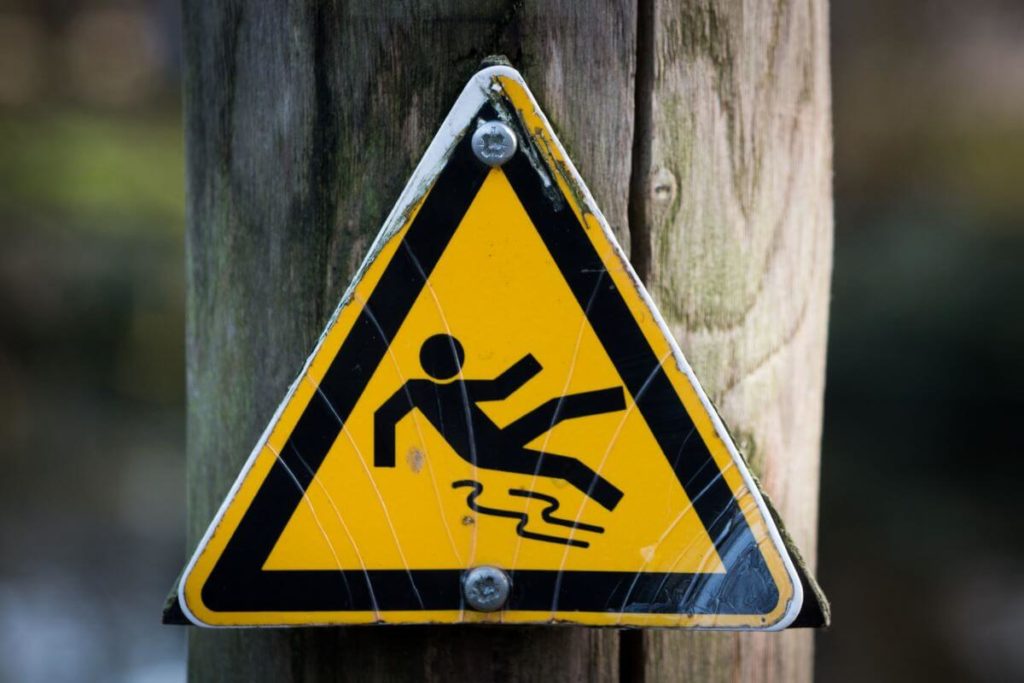Employers have a preliminary obligation and legal duty to provide a safe work environment for everyone. This includes safety measures to protect lone workers from environmental hazards in the workplace.
Lone workers are those who work outside the safety net of a team, so they’re often exposed to environmental hazards that can put them in danger. The Workplace (Health, Safety and Welfare) Regulations 1992 state that employers must take all reasonable steps to protect lone workers from the risk of harm.
The first step in protecting lone workers is by understanding the types of environmental hazards that can come from both inside and outside of the workplace. Knowing what those hazards are will help you determine how best to protect them.

In this article, we will outline eight types of environmental hazards that can affect different types of lone workers across various industries.
#1 Safety Hazards
The first type of environmental hazard that lone workers face is the safety surrounding the job at hand. These safety hazards can vary depending on the type of lone worker job.
For example, working at height can be a safety hazard for lone worker jobs in construction, window cleaning, or cable repair. The Journal of Health & Safety International reports that “working at height remains one of the biggest causes of occupational fatalities and major injuries.”
Other types of safety hazard can be directly linked to the equipment required for the job or type of task at hand. This can range from working with heavy machinery to slippery floors.
It is important for companies to first identify all safety hazards related to the job. Once identified, the next step is implementing adequate safety equipment and guidelines to minimise the chances of an accident from happening in the first place or minimise injury should an accident happen.
#2 Biological Hazards
Biological hazards can include exposure to viruses or bacteria that threaten health. This category of environmental hazard can be tricky to navigate because of how difficult it can be to identify, trace, or eliminate biological hazards.
One could classify biological hazards into two classes: identified and unidentified. COVID-19 is an example of an identified biological hazard. As the coronavirus has been classified as a pandemic by the World Health Organisation, employers hold the responsibility to ensure their lone workers are protected by the issued standard operating procedures and access to testing.
On the other hand, unidentified biological hazards are linked to the risk of exposure to biological hazards in general while on the job. For example, lone workers involved in sewerage can be exposed to multiple, unidentified biological hazards from waste material. Similarly, nurses doing home visits can be exposed to viruses or bacteria. In both cases, standard personal protective gear and hygiene standards will be required to protect the lone worker.
#3 Chemical Hazards
Chemical hazards include any type of solid, liquid, or gas that is capable of causing immediate injury or illness to the lone worker, or lead to acute or chronic health effects in the long-term.
Similar to biological hazards, chemical hazards can be difficult to eliminate completely. Thus, it’s important for employers to identify the chemicals a lone worker would—or could—be exposed to, then take the necessary safety and protection measures.
Protecting lone workers from exposure to the danger of chemical hazards is not just limited to protective gear. Regular maintenance of equipment to prevent chemical leaks, such as in a laboratory, is just as important. Employers must also be prepared for potential chemical hazards that can threaten a lone worker, such as an explosion of gasses in mines.
#4 Physical Hazards
Physical hazards expand beyond the dangers of physically handling equipment. It can also include exposure to radiation, bad visibility due to weather, extreme cold or hot weather, high levels of noise, slippery or icy roads, and so on.

Lone workers who work outside of a traditional office environment will have a higher chance of being exposed to physical hazards that can directly impact the safety and performance of their job.
Other than health and safety equipment and standard operating procedures, employers must also consider how incentives or payment structures can affect the safety of lone workers who are exposed to physical hazards. For example, a truck driver who is rewarded monetarily solely based on fast delivery may ignore sticking to the speed limit and drive too fast during unfavourable weather conditions. This can increase the risk of accidents due to physical hazards.
#5 Natural Hazards
Natural hazards such as earthquakes, hurricanes, floods, tsunamis, and avalanches can cause injury or trap lone workers in confined spaces. While many natural hazards can be impossible to predict, it does not liberate the employer from the responsibility of ensuring a lone worker can easily communicate their location and status in the case of a natural disaster or emergency.
Technology is getting to the stage where it can easily track, monitor, and protect lone workers. For example, personal safety devices, lone worker alarms, and CCTV can help other team members monitor the safety and location of lone workers during a natural disaster or emergency situation.
#6 Social Hazards
The most difficult risks to manage are for lone workers with a high-risk exposure to social hazards involving violence. These usually entail night-shift jobs in retail such as petrol stations or motels in remote locations. There are also instances where non-retail lone workers can be considered high-risk for social hazards, such as the healthcare worker in a psychiatric ward or the prison guard.
It’s important for companies to properly assess the risk of exposure to social hazards. Violence can harm or even kill the lone worker in a matter of minutes. It is thus imperative to equip the lone worker with the necessary personal alarms to alert team members whenever they are in danger, as well as the ability to enforce extra security in the work environment when needed.
#7 Personal Health Hazards
Although it may not seem to be an environmental hazard that an employer is responsible to care for, personal health can be linked to the environment of the job and thus needs to be considered.
For example, lone workers in remote locations with lack of access to personal hygiene such as toilets can risk their personal health. Another example are shift-work jobs that can lead to inadequate rest or low quality sleep. The effects of sleep deprivation can affect both the health and safety of the lone worker as well as the quality of work.
Mitigating the risks of personal health hazards could often require a multiple-prong approach involving effective scheduling and providing equipment that can support comfort such as personal hygiene packages, travel pillows, and so on.
#8 Ergonomic Hazards
Similar to personal health hazards, ergonomic hazards may not seem like it falls under the responsibility of an employer. However, since the repetitive nature of many lone worker jobs can impact health in the long run, taking the measures to prevent or minimise ergonomic hazards is best.
Ergonomic hazards cover anything that could cause damage to the human musculoskeletal system. It can include discomfort from long periods of sitting, repetitive strain injury, heavy lifting, or anything that promotes unnatural or uncomfortable movements that can lead to injury.
This type of hazard also requires a multi-prong approach that can range from comfortable equipment, such as ergonomic chairs and keyboards, through to educating staff and managing schedules, such as limiting the duration of shifts that require heavy lifting.
Take the Proactive Step to Protect Lone Workers
At the end of the day, your employees are your greatest assets and their safety is your responsibility. By identifying the environmental hazards that your company’s lone workers are exposed to, assessing its risks, and then taking the proactive measures to minimise these risks and protect your lone workers, you can save yourself—and your firm—a lot of unnecessary stress.
Implementing the right protocols and safety measures to avoid preventable accidents for lone workers can save your firm from unnecessary medical claims and even from negative PR. In cases where you face an occasional crisis that could not be avoided, simply being prepared and knowing what procedures to follow can help you, your team, and your lone workers better navigate through the emergency with positive outcomes.
Furthermore, taking the measures to protect your lone workers can also help you avoid any penalties following a Health & Safety Executive (HSE) inspection. In the event of unfortunate fatalities in the workplace, these measures can even serve to protect you and your company from personal liability such as the corporate manslaughter act.
To learn more about how your company can effectively protect lone workers under your responsibility, click the following link to download our free guide: “Employers’ Legal Obligations For Lone Worker Protection.”



